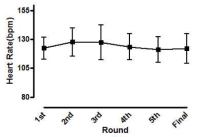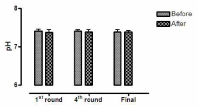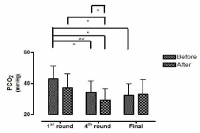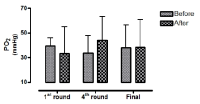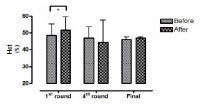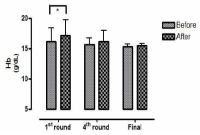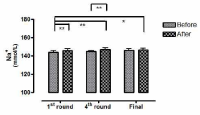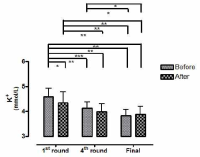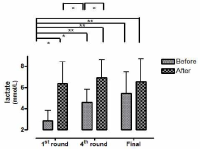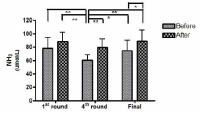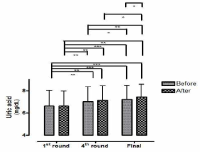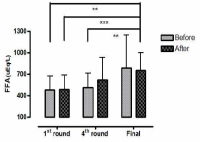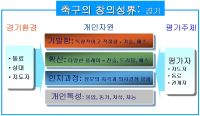
The purpose of this study was to explore a framework of understanding football performance. Researcher review was conducted to organize perspectives for football performance and drew implications as well as drift of football performance based on intelligence approach. Discussions for intelligence had been proceeded in concepts of learning ability, multiple intelligence, successful intelligence, and moral intelligence. Discussions of football performance approaches fitness, skill, and strategies in traditional intelligence aspects. The multiple intelligence perception discusses perspective, mentality, body, and analysis. The successful intelligence perspective deals with creativity, practical intelligence, and football talents. However, specific discussions for moral intelligence have not been progressed yet. FIFA’s social responsibility project and UEFA’s RESPECT campaign reflect that the discussions of football performance develops in a way of the moral intelligence. In European football, issues regarding value, such as RESPECT and against Racism, are currently emerging. Considering the change in the European football, the global football leagues will share the issues related to value in the near future. Given the fact that discussion for intelligence had been proceeded learning ability, multiple intelligence, successful intelligence, and moral intelligence, the moral intelligence will be a main concern in the further football performance discussion. The moral intelligence will be incorporated into football performance evaluations soon. Furthermore, teams and players will strive to place efforts in order for pursuing value and reputation as factors of performance.

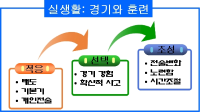




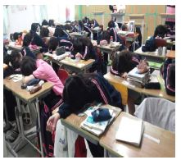
The purpose of this study was to explore Physically Activity Lifestyle pattern & constraints of high school girl in city, and then to propose P.A. promotional ways. I used International Physical Activity Questionnaire Long version and accelerometer to examine outline of P.A. pattern, and photo-voice as qualitative research techniques. The results were as followings. First, sedentary lifestyles of students in G girls' high school was terrible. Accelerometer was said that their inactive time were about 92.4%, however their moderate to vigorous time about 0.76% of the total time of a week. And, school domain of four domains(school, transportation, leisure, domestic chores) were the most active domain of all. Second, P.A. constraints were analyzed as 'because of something no'(time, effort, will, space, physical skills and person) and 'because of something'(smart phone, car, gaze, rules). The key cause were a shortage of time caused by academic based on school curriculum, sedentary leisure and transportation culture. Lastly, I proposed high school girl' P.A. promotional ways in basis of social ecological model.

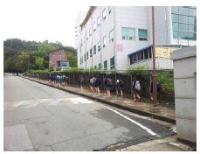
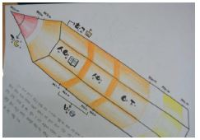
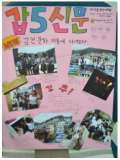
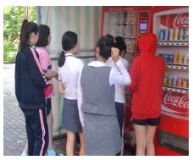




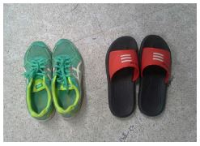

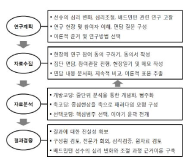
This study was purposed to explore psychological change and regulation process during badminton competition. The data were conducted using group interviews and participation observations who 18 K college badminton players. The data were analyzed using open, axial, and selective coding based on grounded theory method (Strauss & Corbin, 1998). The results were as follows: Open coding results, 89 concepts, 44 subcategories, and 18 categories emerged as psychological change and regulation process during badminton competitions. Axial coding results, the categories are showed structural relationships such as performance, score, psychological momentum, the importance of competition, court environment, physical condition, competition strategy, psychological preparation, past experience, outcome expectation, psychological disturbance, psychological skills, game situation-changing strategy, support-seeking strategy, significant others' behavior, the opponents' behavior, psychological resilience, and maintenance psychological disturbance. Selective coding results, core category of this study was revealed to maintain psychological homeostasis. Environmental context during badminton competitions causes specific situations and events that evoke psychological disturbance. In turn, a player seeks mental and behavioral strategies to maintain psychological homeostasis. There is psychological homeostasis mechanism during badminton competitions for peak performance. Development of proper interest for psychological homeostasis will be improved through this research approach in sport psychology.

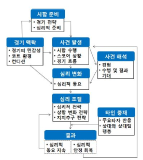

Purpose: The purpose of the present study was to identify the difference of overall putting accuracy and/or distance control among three visual conditions; executing putt focusing vision on the near target(ball), focusing on the far target(hole), and with no vision. In order to satisfy ecological validity, the test was held not on the synthetic putting green in a laboratory, but on the outdoor real putting green. Methods: A putting green with slight slope and minimal break was selected as the test site. The test was held at 8.5m uphill, 13m uphill, 8.5m downhill, and 13m downhill. Twenty participants were asked to putt the ball as close to the target as possible. They were also asked to adhere to their own pre-putt routine having enough time of visual fixation toward the hole to get distance and direction cues. Each Participant putted a total of 12 balls putting 3 balls on each distance-slope experimental condition. Overall putting accuracy score represented actual distance (in meter) from the far target(hole) to the ball rest. Distance control score represented it from the near target(original ball position) to the ball rest. Repeated measure ANOVA was used to verify the raw data. Results: Putt from 8.5m uphill and putt from 13m downhill were revealed to have statistically significant difference only in distance control by visual focus conditions. Putt focusing vision on the ball was the best at 8.5m uphill. Putt focusing vision on the hole was the best at 13m downhill. However, there was no significant difference in overall putting accuracy by visual conditions. Discussion & Conclusion: The results of our study are interesting and valuable from two aspects. First, the presumption is that overall putting accuracy on the real putting green has no significant difference by visual conditions because it is affected by various factors, i.e. memory of distance, slope, break, turf condition, impact quality, body alignment, etc. Second, no consistent evidence was detected that specific visual condition, especially executing putt focusing vision on the hole, was the best for distance control.

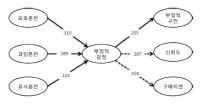
The ever-increasing golf club market made difficult and brought confusion to most of amateur golfers to differentiate and choose suitable clubs for them. Therefore, the purpose of study was to examine how consumer confusion proneness affects consumer’s negative emotion, negative word of mouth, trust and decision postponement, during the process of purchasing golf clubs. 450 questionnaires were distributed to recreational golfers in 6 different golf-driving rages and 4 golf courses located in Seoul, Gyeonggi and Gangwon area with a return rate of 98.4% (n=443). Total of 432 questionnaires were used for data analyses with PASW 18.0 and AMOS 18.0. The results of the study are as follow. First, all of the subordinate factors of consumer confusion proneness had a significant effect on the consumer’s negative emotion. Second, consumer’s negative emotion had a significant effect on negative word of mouth. Third, consumer’s negative emotion had a significant effect on trust. Fourth, consumer’s negative emotion had no significant effect on purchase postponement.


Purpose Based on the match data of major judo world competitions in the last five years, this study identifies differences in general characteristics and environmental factors according to scoring technique and scoring times. And by exploring the factors associated with scoring technique, I would like to present a practical strategy that can be used to establish guided tactics. Methods 50,828 points were used for analysis of the entire men and women who competed from 2016 to 2020. Differences in the characteristics of the world's leading athletes according to their types of technique were used in conjunction with the chi-square test and the one-way ANOVA with Sceffe test to produce results. Results The results of this study showed that the type of skill by foot technique was the most common, and the ratio of hand skill to female player to push and foot skill was relatively high. The higher the weight class, the lower the ratio of hand technique, the higher the press rate, and the frequency of skill types also increased. At the Olympic Games, the ratio of hardening technique was higher than that of other competitions, and as the year progressed, the ratio of hand and waist technique increased, and the number of mat-hold decreased. The ratio of hardening technology was relatively high, and the ratio of hand-to-foot technology was relatively high as the semi-final and final rounds were higher. As for technical time, the male athlete's skill time appeared to be about 12 seconds longer on average, with the lowest in the heavyweight class and the longest in the lightweight class. Athletes from the Asian continent appeared to have the longest technical time, which is believed to have resulted from the characteristics of excellent physical strength, good endurance, and strong hardening technique. The skill time leading to the score by pressing and hand skill was the longest, and the waist skill and grip skill time were relatively short. Half of them appeared about 5 seconds shorter on average compared to the first round, and the more important the game (the 4th round, semi-final, and final) the longer the skill time. Conclusion In conclusion, through this study, the characteristics of the world judo players' skill types and time were confirmed, and based on this, it is necessary to analyze and systematize the technical types of the world's best athletes, including Korean athletes, in order to improve their judo performance.


PURPOSE This research explores the underlying mechanism that determines how people perceive their goal progress and its relation with their motivation and self-efficacy. METHODS Three hundred and sixty Koreans who participated in an online survey were given salient individual exercise goals (11 workouts), and they reported their self-efficacy, goal progress perception, and motivation. We conducted dummy variable multiple regression analysis (2 [absolute progress-low (27%) vs. high (73%)] X 2 [categorization vs. no-categorization]) and multiple moderated mediation analysis based on Process Model 7 and 21 (Hayes, 2017). RESULTS The findings showed significant interaction between categorization and absolute progress on progress perception. In low progress condition, the categorization group perceived more progress than no categorization group and contrary effect in high progress condition. For motivation, in low progress condition, categorization group was more motivated than no categorization group, and inverse effect in high progress condition. Moreover, there was no direct effect, but only low self-efficacy group played the moderating role between perceived progress and motivation in conditional indirect effect. Lastly, the result indicated significant multiple moderated mediation effect. CONCLUSIONS This research theoretically contributes to the domains of categorization and motivation. Sport marketers can utilize categorization as a strategy by breaking down yearly memberships into monthly categories based on consumers perceptions. Future research can include subsequent motivation after a superordinate goal is completed.
Purpose Based on Haidt's social-intuitionist theory, this study analyzes the differences in ethical decision-making between sport athletes and the general public in order to understand the ethical judgment tendencies of athletes and examine the determining factors influencing their judgment from the perspective of their environment. In so doing, this study hopes to motivate education for enhancing ethical consciousness as well as institutional policy. Methods To this end, 200 elite athletes in their twenties registered for more than 10 years at the Korean Sports Association and 200 college students in their twenties from five universities in Seoul were selected for comparison. Response trends for each item were analyzed by percentage, and differences between groups were confirmed by the χ2 test method. Results The results are as follows. First, in general ethical situations, athletes usually showed a compulsory ethical view that emphasized principles, whereas in a sports situation, they showed a double consciousness and revealed a very strong consequential ethical view which put much emphasis on outcome. Second, athletes strongly maintained a Confucian ethical view that recognized ethics as a norm compared to the general public and, as a result, it was found that paternalism was relatively stronger than rationalism in their ethical decision making. Third, athletes regarded other people's thoughts and group interests as important criteria for ethical decision-making rather than individual thoughts and interests, and showed a group-centered mindset which emphasized group harmony and relationship. Fourth, while the general public viewed excellent athletes as those with excellent skills and good personality, and valued their morality, athletes thought relatively little of the influence and importance of morality in their success. Finally, it was found that coaches and managers were fundamental to the formation of the athlete’s moral view. Conclusion An in-depth understanding of sports participants' ethical awareness should come first in order to enhance ethical consciousness in sport. I hope this study will work as a catalyst for research which approaches athletes' ethical consciousness from a socio-cultural context.

Purpose The purpose of this study was to compare the technique and power of the Korean national athletes and international athletes in the start phase of the 500 m speed skating to improve the performance and to understand the relationship between the biomechanical variables affecting the record. Method The subjects were 8 Korean national athletes (Korean athletes) and 6 international athletes (international athletes). For the three dimensional motion analysis, 5 high-speed cameras were used to capture the 40 m start phase of the athletes participating in the international competition. The variables selected for analysis were the kinematic chain, 100 m net time, time to 9 strokes, horizontal position of center of mass after 2.5 sec, range of motion of trunk, knee, push-off angle, net power output, total power loss. Results The correct kinematic chain ratio of Korean athletes was 61.2%, which was lower than 76.0% of international athletes. The time to 9 strokes was 2.82±0.25 sec for Korean athletes, which was significantly lower than 2.53±0.11 sec for international athletes (p=.001). The range of motion of the push-off angle was 60.15±2.75° for Korean athletes, which was significantly lower than 64.76±2.55° for international athletes (p=.001). The net power output was 887.2±269.9 W for Korean players and 1103±264.1 W for international players (p=.021). The variables related to the 100 m net time were the horizontal position of center of mass after 2.5 sec (r=-.956, p=.001), the net power output (r=-.931, p=.001), and the total power loss (r=-.904, p=.001). Conclusion In order to improve the start performance of Korean athletes, it is necessary to maximize the efficiency of skating through skill training to use the correct kinematic chain. Also power enhancement training is needed to improve leg power because the net power output related with 100 m net time.



This study aimed to examine the change of the indices in blood gas, ions, and by-products of fatigue substances and components in collegiate elite Kumdo competitors, who carry out a number of competitive games during one day tournament event. Subjects were carried out total 6 simulated, but followed same conditions and rules of actual competition, with providing similar inter-game break time. Eight well trained male competitors, who had awarded from national wide competitions, voluntarily participated in this study and revealed 51.5(±8.8) mL·kg-1min-1 of maximal oxygen consumption and 12.4(±5.1) % body fat. TWOWAY ANOVA (tournament round vs. pre & post each game) was adopted to test whether the mean differences were existed, and the interaction between individual factors and main effect within each factors were analyzed. Statistical significance was set at Alpha (α) = .05. While there were no significant changes in blood hydrogen ion concentration (i.e., pH) and partial pressure of oxygen (PO2), partial pressure of carbon dioxide (PCO2) significantly decreased as the tournament games were repeated. The level of hemoglobin and hematocrit were significantly elevated only during the 1st round of tournament. Na+ was significantly increased but K+ was decreased. Ca2+ concentration however, was not significantly altered. Although the changes of blood glucose level did not show any consistent patterns, free fatty acid (FFA) concentration was increased after completed each game compared to prior to initiate the each game. Blood NH3, lactic acid, and uric acid concentration increased at immediately after each game, and the pattern was maintained throughout the tournament round continued. These results reflected that the repeated participation of the tournament may cause the accumulation of the by-products of fatigue substances in blood and alteration of various ion components and energy substrates. Accordingly, the ways of reducing the physical fatigue and providing adequate energy source inter-tournament games needs to be necessarily considered for successful Kumdo competition. Data obtained from this study could valuable for searching the effective training and management methods to improve the performance and reduce the fatigue of the professional elite Kumdo competitors.

